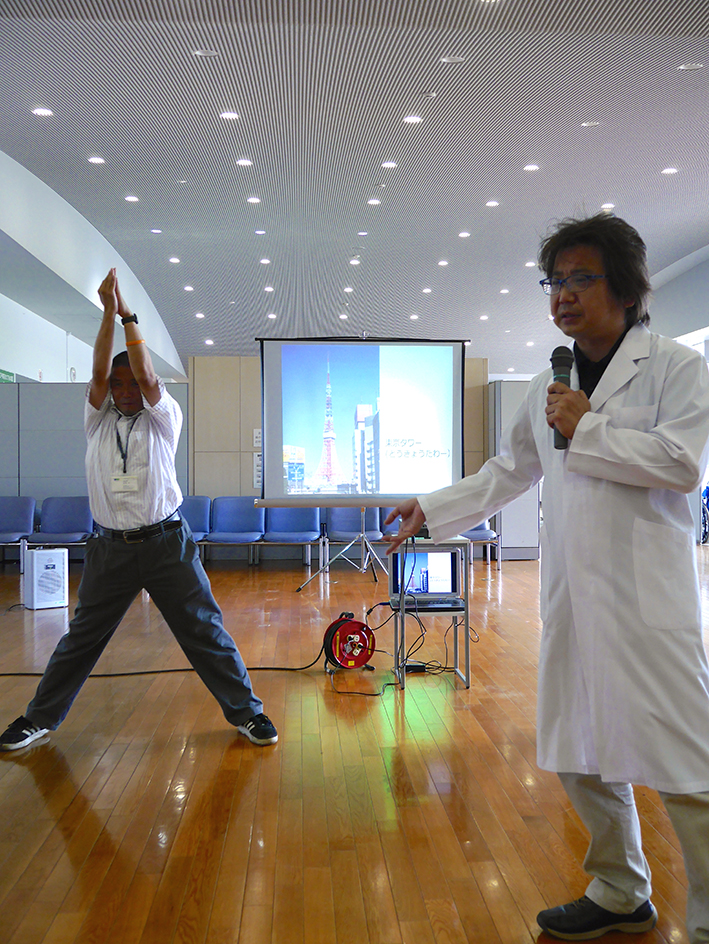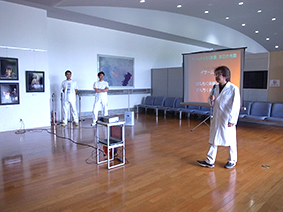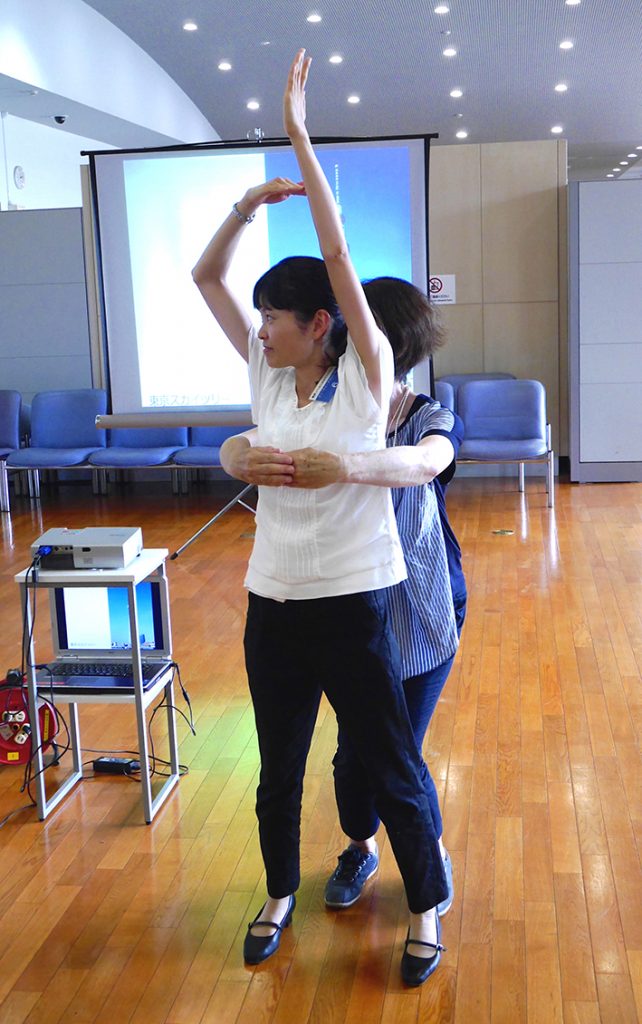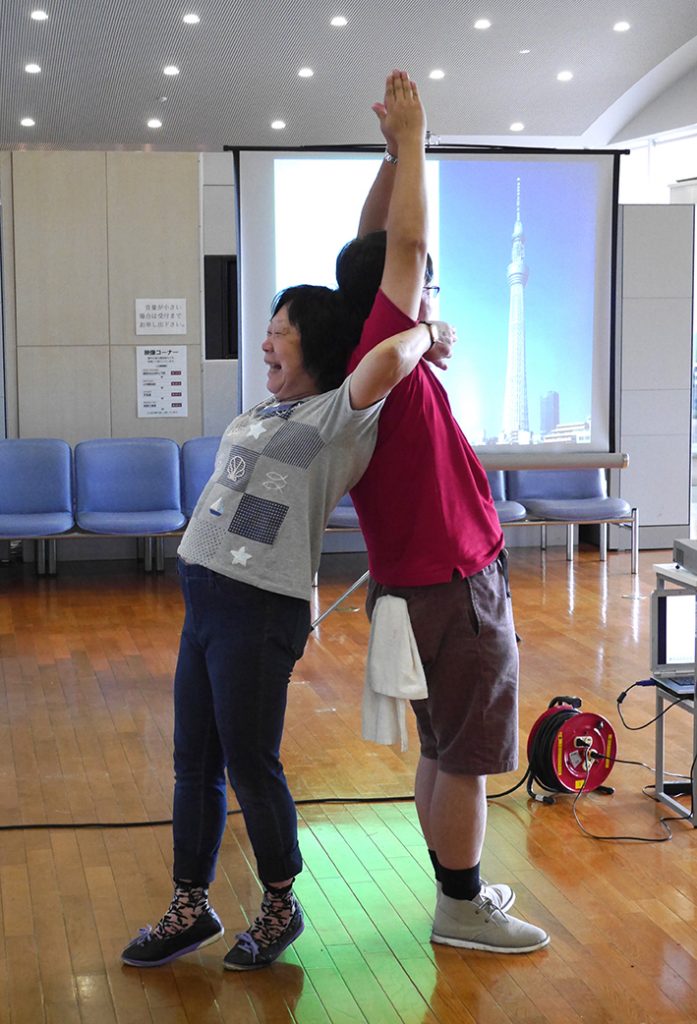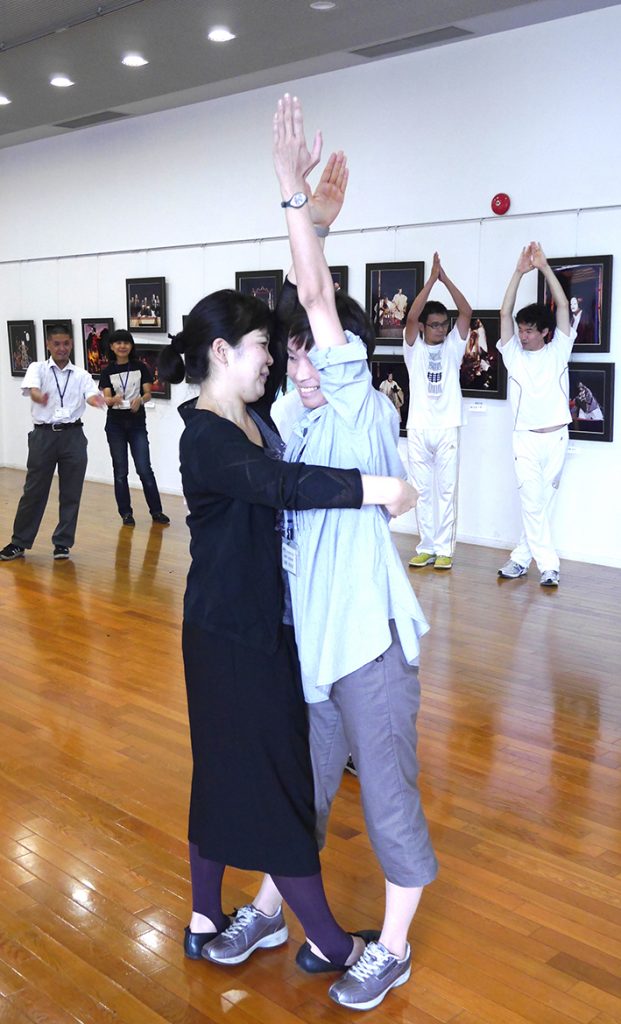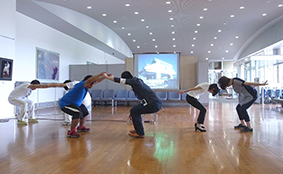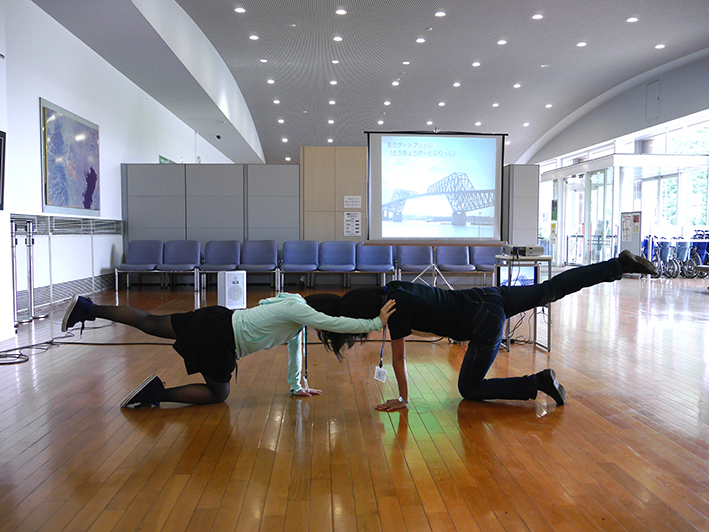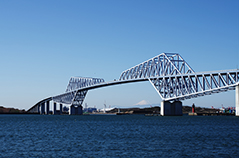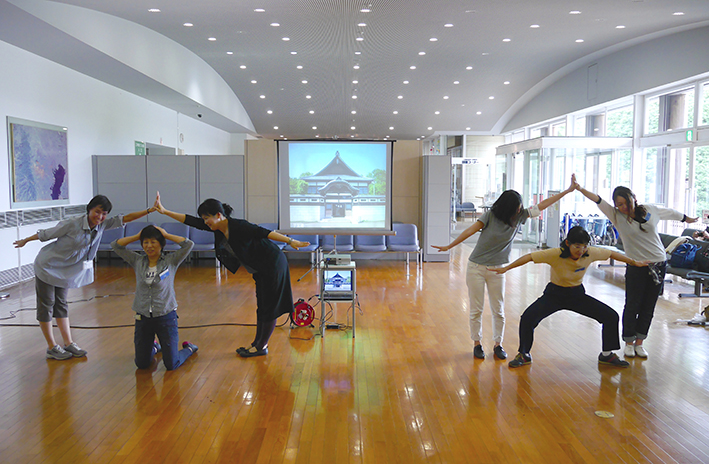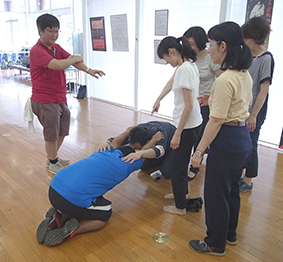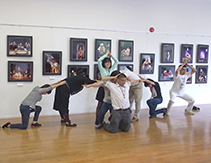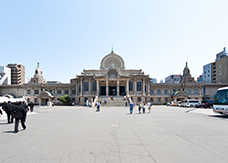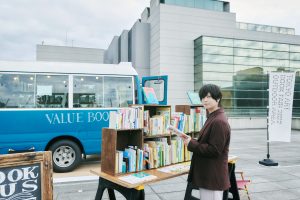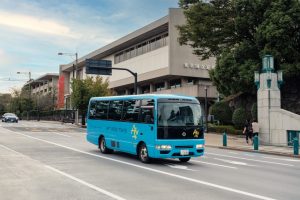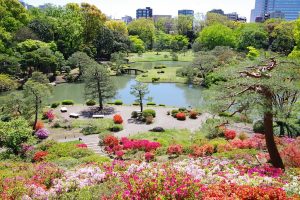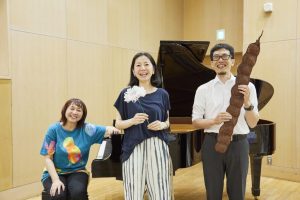As one of the activities of the Teachers Program at the Edo-Tokyo Open Air Architectural Museum, teachers from different schools participated in architecture gymnastics. Architecture gymnastics is to express architecture by means of your body. Instructors for the day were Isaam Yone (Isamu Yoneyama) aka Dr. Architecture Gymnastics (because he invented architecture gymnastics), Mr. Architecture Gymnastics One (Hidehisa Takahashi), and Mr. Architecture Gymnastics V3 (Yuji Tanaka, a curator).
According to Dr. Architecture Gymnastics, this day was the first time in the 10-year history of architecture gymnastics lessons to include no children. Dr. Architecture Gymnastics is a curator of the Edo-Tokyo Museum, and he and his colleague, Mr. Architecture Gymnastics One, invented it as a workshop for children in 2002. It has expanded not only in Japan, but in Germany, Sweden and South Africa. Although all it takes is your body, there are three principles: "Use only your body," "Do it as your heart tells you to," and "Stay still when you think you get it right." Mr. Architecture Gymnastics One explains these principles and then lets the participants try it out.


